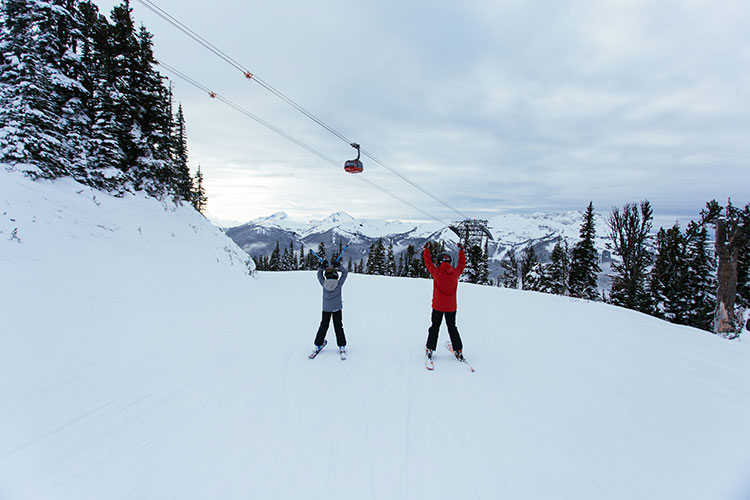Updated August, 2021
Getting ready for your first day on the slopes is like getting your car ready for a long road trip. Sure, you could chance it and hit the road without giving it a once over or double-checking that you’ve packed everything, but why risk it? If you’ve ever broken down by the side of the road or had to backtrack for a forgotten item, you know that a little prep work goes a long way and the same applies to the slopes.
They say the best time to do something is yesterday, the second-best time for tuning up for winter is today. Opening day will be upon us fast (November 23, 2023) so there’s no better time than now to get your on-mountain essentials ready for the winter season. From your gear to personal health and fitness, here’s everything you need to know to be a finely tuned machine when you hit the slopes this winter.
Tuning Up Your Gear
These tools of the trade make it possible to do the sports we love. The time and energy you put into gear maintenance can pay back tenfold on the slopes. Last season ended pretty abruptly, do you remember what condition your gear was in when you put it away? It’s time to take it out of the closet, dust it off and get it ready to work hard this winter.
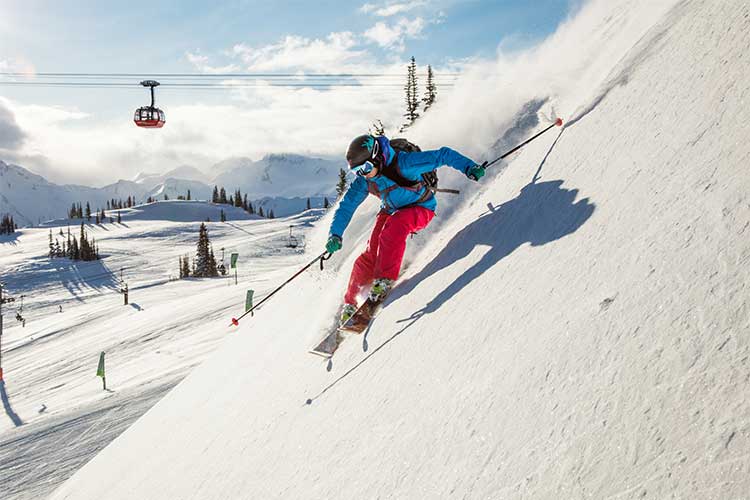
Hard Goods – Boards, Skis, Poles, Boots & Bindings
This is where the rubber meets the road, or more accurately, the P-Tex meets the snow. Having properly functioning hard goods is not only essential to skiing or snowboarding well, but also key to doing it safely.
- Wax your base. After a long summer, it’s going to be dry. Early season snow tends to be wet and sticky. I’ve been lazy and skipped this step before and then spent the day going turtle speed on the flats.
- Check for damage to your base and edges; repair if needed. If you don’t deal with it, water can get inside and cause the layers to start coming apart (delamination), which is hard to fix.
- Sharpen your edges. You need those to stop and turn (always handy).
- Check all of your bolts and screws to make sure they’re tightly fastened. A screw working its way loose is a ticking time bomb.
- Examine your helmet for cracks and wear; replace it if you find any or if you’ve had any significant crashes in the past. Helmets are actually designed to break as a way of absorbing impact, but once they have broken in this way, they can’t do it again, so you are no longer fully protected. I don’t like having to pony up for a new helmet after a big crash either (especially when it mostly still looks great), but you only have one brain right?
- Put on your boots and do them up fully. Check that all the latches are working properly and that your laces aren’t frayed. True story, I’ve gone to tighten my snowboard boots on the gondola on opening day and the lace broke off in my hand – I’ll never make that mistake again.
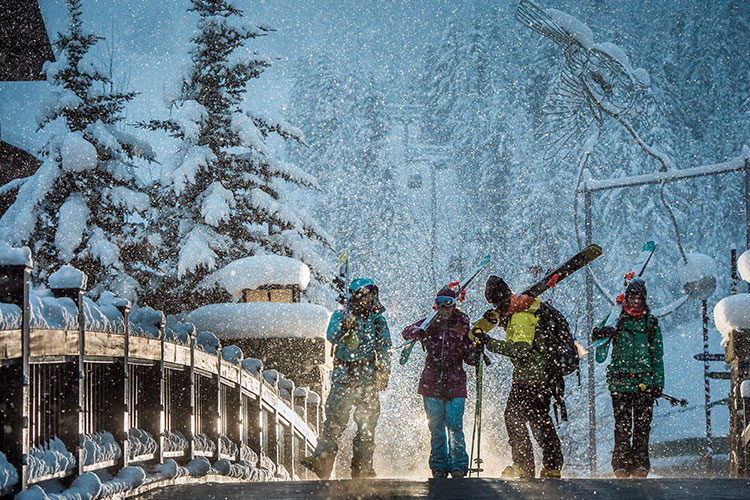
Soft Goods – Jackets, Pants, Gloves, Thermals & Socks
A.k.a clothes, they’re the stuff that keeps the warm in and the wet out. More than mere fashion, well-performing soft goods keep you out there sending it for longer.
- Check for rips and holes, and send items to be mended if possible or replace them if they’re beyond repair.
- Refresh your waterproofing. Put your outwear through a wash cycle with a waterproof refresher like Tech Wash to make it weatherproof again.
For more on layering, materials and gear tech have a read of How to Stay Warm and Dry on the Slopes in Whistler.
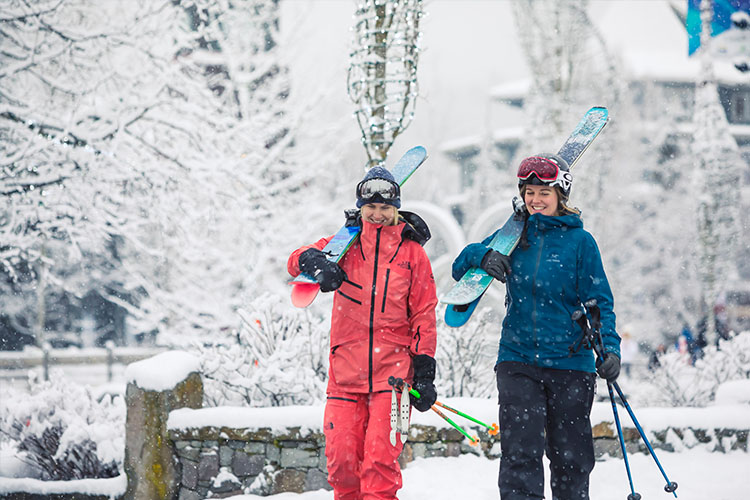
Upgrade If Needed
No matter how well cared for your gear is, eventually it’s going to break down or become so outdated it makes your day on the slopes harder than it needs to be.
I try to upgrade one major piece of gear each year. One year it could be a new board, the next maybe some goggles. By doing this I never have a season where I need to replace multiple, expensive big ticket items all at once.
Dotted along the Village Stroll you can find a number of stores including Comor Sports, Escape Route, McCoos, Evolution, Spicy Sports, TMC Freeriderz and The Circle that are stocked with an extensive range of gear. Many of them also offer online shopping so you can get the best of Whistler from home.
If you want to know what you should be putting in your suitcase for a Whistler trip, take a read of How to Plan and Pack for a Ski Trip to Whistler.
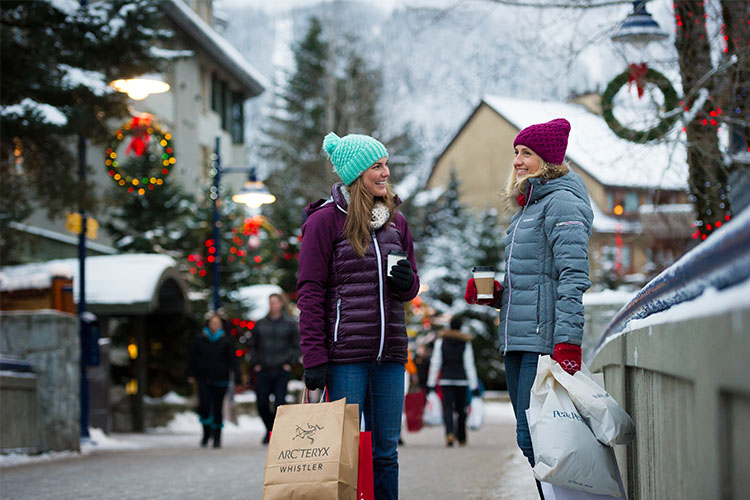
Tuning Up Your Body
If you’ve ever gone skiing or snowboarding without any preparation you know that it can be a real sufferfest. I’m guilty of strapping in for many an opening day with little or no training. And let me tell ya, I’ve paid the price in leg cramps.
Who you really want to listen to is Cinta Cassini from Altitude Fitness. She’s a pro at helping skiers and snowboarders put in the training they need to feel strong on the slopes.
View this post on Instagram
Opening day is notorious for being a thigh burner. What advice do you have for our readers, to help them prepare for the slopes?
CC: Many people don’t spend enough time working on mobility before skiing or snowboarding. Spending time stretching before hitting the slopes helps to warm up your muscles and prepare your joints.
When we’re feeling sore from a day on the mountain what kinds of programs or amenities do you have to help us rest and recover?
CC: Adding foam rolling after your workout is beneficial because it helps to relieve muscle tension and activates blood circulation while you’re recovering. This, followed by 10 – 15 minutes of stretching will help you feel better after a day in the mountains.
View this post on Instagram
Though temporarily closed, we typically offer floatation therapy, an excellent tool for muscle recovery. The high levels of magnesium sulfate in the float tank help to relax sore muscles, kind of like taking a really strong Epsom salt bath. It is also recommended for those suffering from concussion trauma, as the time in the quiet and dark gives your brain a cognitive rest and time to heal.
Tuning Up Your Insides
If you’ve been eating more pizza and French fries than performing them on your skis, it’s time to get serious about tuning up your insides. From chiropractic therapy to acupuncture, naturopathy and intravenous therapy, the team at Creekside Health are experts at tuning up your insides.

What’s your one piece of advice for people wanting to start the season feeling and performing their best?
Creekside Health (CH): Be proactive! The fall shoulder season is a great time to prepare ourselves for a big winter on the mountain. This can look like winter sport-specific training, cleaning up your diet after summer indulgences, getting extra sleep and checking in with your healthcare team. Starting the winter sports season in optimal health increases our enjoyment of the mountains and significantly decreases injury risk.
Whistler is home to high-performance athletes. What kind of treatments and or nutritional choices are they using that us average folk have been missing out on?
CH: The elite athletes we work with seek out a variety of treatments, lab tests, and diet and supplement options including naturopathic medicine, acupuncture, chiropractic, osteopathy, intravenous therapy, prolotherapy and neurofeedback. The key is to find the unique combination that works for each individual. This is where the integrative team-based approach of Creekside Health can be so helpful.
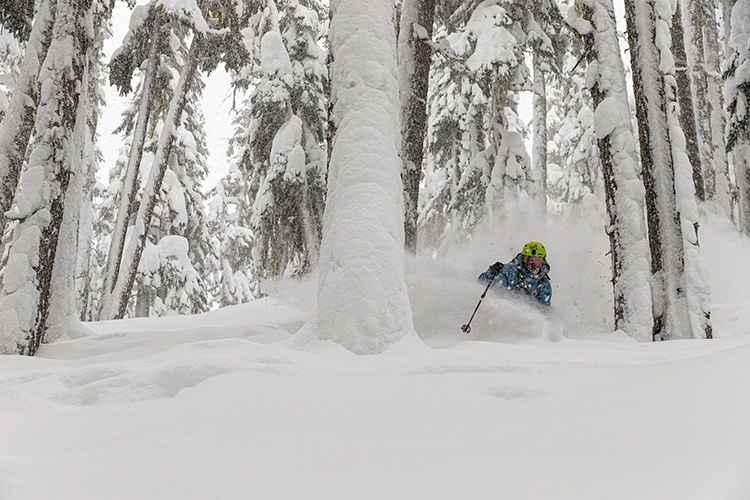
What advice do you have for staying healthy this winter?
CH: Eating a healthy diet with balanced macronutrients, a variety of fruits and vegetables and a regular eating schedule to maintain stable blood sugar will go a long way in strengthening our immune systems.
There are a variety of natural remedies that can boost immunity including Vitamin C & D, zinc, Echinacea and mushroom extracts, as well as intravenous nutrient therapies. In addition, sleeping eight to nine hours a night consistently boosts immunity.
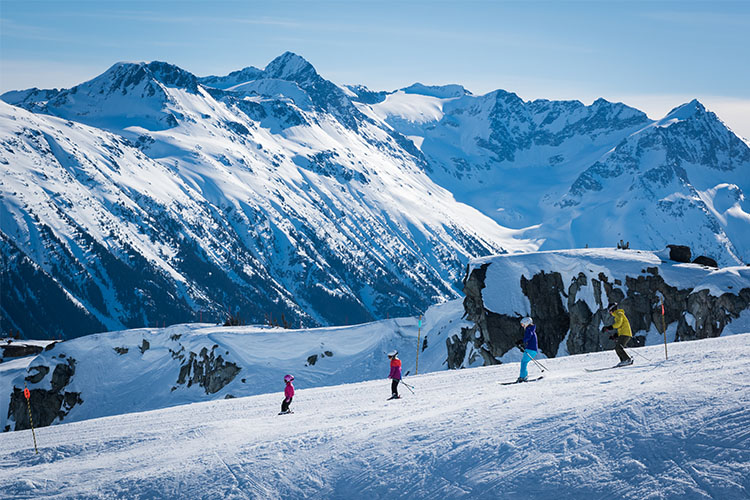
Whether you’re coming for opening day or later in the season, your first day in Whistler is always special. Take advantage of shoulder season days to get prepped and ready for when it’s go time!
If you haven’t locked in your tickets or accommodation yet, the team at Whistler.com has the best deals and packages available (with flexible cancellation and price match guarantee).

